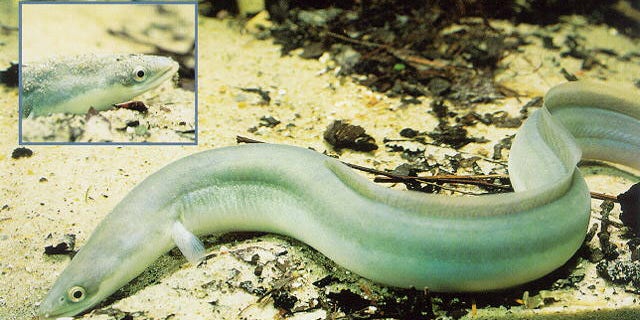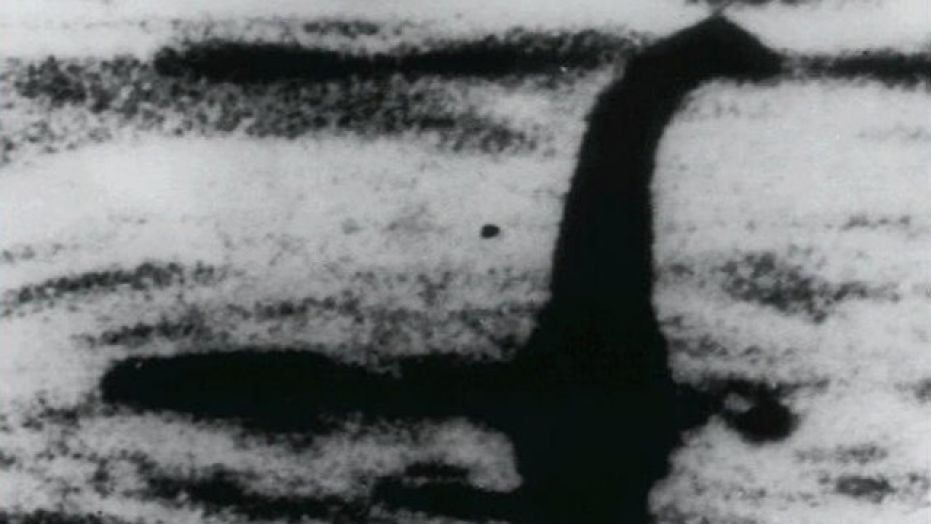Researcher: Loch Ness monster could be a giant eel
Find out why a New Zealand researcher is saying the Loch Ness monster may be a giant eel.
After months of speculation surrounding a study into whether the Loch Ness monster was real, the researcher behind it has claimed it could be a giant eel and not a giant plesiosaur from a long-lost era.
Speaking at a press conference early Thursday morning, New Zealand researcher Neil Gemmell gave his "plausible" explanation for what people may have seen in the past, but added that it is most certainly not a dinosaur.
"We can't find any evidence of a creature that's remotely related to that in our environmental-DNA sequence data," Gemmell said, according to the BBC. "So, sorry, I don't think the plesiosaur idea holds up based on the data that we have obtained."

This is an undated file photo of a shadowy shape that some people say is a photo of the Loch Ness monster in Scotland. (AP Photo, File)
"There is a very significant amount of eel DNA," Gemmell, a geneticist from New Zealand's University of Otago, added. "Eels are very plentiful in Loch Ness, with eel DNA found at pretty much every location sampled – there are a lot of them. So, are they giant eels? Well, our data doesn't reveal their size, but the sheer quantity of the material says that we can't discount the possibility that there may be giant eels in Loch Ness."
He continued: "Therefore we can't discount the possibility that what people see and believe is the Loch Ness monster might be a giant eel."
European eels can grow up to 5 feet, according to the USGS. They have a diet that consists of insect larvae, mollusks, worms and crustaceans. They're also able to "survive near freezing temperatures" and are seen as "remarkably mobile," capable of moving over dams, weirs and even land, adding credence to Gemmell's findings.

European eel. (Credit: Steffen Zienert, USGS)
Gemmell, who first announced the study in May 2018, said last month that one theory was "plausible" in attempting to explain the fabled Nessie.
In addition, the ideas that sturgeon or Greenland sharks lived in the loch were also put to rest after Gemmell said no DNA of either creature had been found among the 250 water samples taken from various depths.
LOCH NESS MONSTER: THIS IS SCOTLAND'S PLAN IF THE FABLED BEAST IS CAUGHT
Gemmell's research was established to find what types of plants and animals live in the loch and not specifically to find the mythical creature, but Gemmell conceded that his work did add to the legend.
"People love a mystery, we've used science to add another chapter to Loch Ness' mystique," he said, according to the BBC.
One of Scotland's oldest myths, the story that a creature was living in Loch Ness, dates back to the sixth century. The 19th and 20th centuries, in particular, saw an increase in interest, especially after the infamous "surgeon's photograph" in 1934.
A study published in April suggested that the legend of the Loch Ness monster and other long-necked "sea monsters" may have been influenced by something very real and even more terrifying — dinosaurs.
The legend of the Loch Ness monster has commonly been attributed to a plesiosaur that somehow managed to survive the mass extinction event that killed off the dinosaurs.
CLICK HERE TO GET THE FOX NEWS APP
Source: Read Full Article

